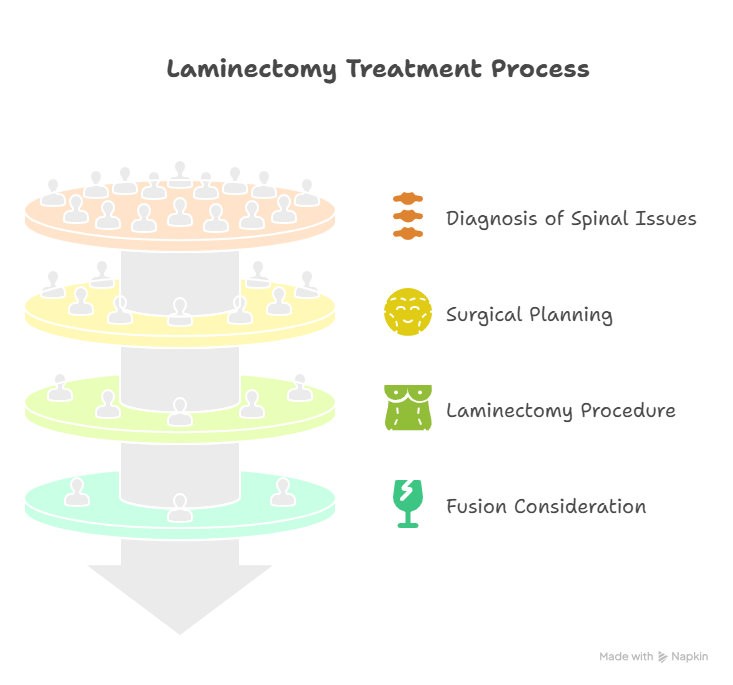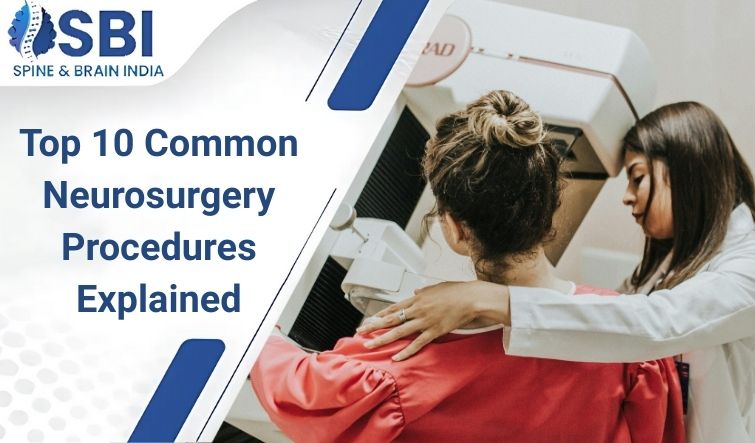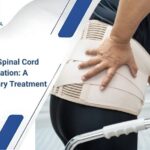When you or a loved one receives a diagnosis that might require neurosurgery, it’s natural to feel a mix of fear, uncertainty, and an urgent need for understanding. The brain and spine are the very control centers of our existence, and any intervention on these delicate structures is a serious matter. Yet, neurosurgical advancements have made it possible to treat conditions that were once deemed untreatable, offering hope and significantly improving quality of life for countless individuals. To help demystify this critical field, let’s explore the Top 10 Common Neurosurgery Procedures Explained, offering you a clearer picture of what these interventions involve and how they address various neurological conditions.
Understanding these procedures can empower you, alleviate some anxieties, and help you engage more effectively in discussions with your medical team. While the complexity of neurosurgery means each case is unique, these common procedures form the backbone of modern neurosurgical practice, addressing a wide range of issues from debilitating pain to life-threatening conditions.
Curious About Neurosurgery Procedures?
Learn from Dr. Arun Saroha, with 25+ years of experience, about the top 10 common neurosurgery procedures and how they can help treat brain and spine conditions safely.
Consult Now1. Microdiscectomy / Lumbar Discectomy
- What it treats: This procedure is primarily performed to alleviate pain, numbness, or weakness in the leg(s) caused by a herniated disc in the lumbar (lower) spine. A herniated disc occurs when the soft, jelly-like center of a spinal disc pushes through its tougher outer layer, irritating or compressing a nearby spinal nerve root.
- The Procedure: Often performed using minimally invasive techniques, the surgeon makes a small incision (typically less than an inch) in the back. Using a microscope or endoscope for magnified visualization, and specialized instruments, a small amount of bone or ligament may be removed to access the herniated disc. The portion of the disc that is compressing the nerve is then carefully removed. The goal is to relieve pressure on the nerve, allowing it to heal and reducing symptoms.
- Why it’s common: Lumbar disc herniations are a very frequent cause of radiating leg pain (sciatica), and microdiscectomy offers highly effective and relatively rapid relief for patients who haven’t responded to conservative treatments. It’s one of the most common spinal neurosurgery procedures.
2. Laminectomy / Decompression Surgery

- What it treats: Laminectomy, often referred to as decompression surgery, is performed to relieve pressure on the spinal cord or spinal nerves, typically caused by spinal stenosis (narrowing of the spinal canal), bone spurs, thickened ligaments, or disc herniations. This pressure can lead to chronic back pain, radiating pain, numbness, tingling, and weakness in the arms or legs.
- The Procedure: The surgeon removes part or all of the lamina (the bony arch on the back of a vertebra). This creates more space within the spinal canal, decompressing the neural structures. Depending on the extent of the narrowing and the approach, it can be done through traditional open surgery or minimally invasive techniques, using a microscope or endoscope. If instability is a concern after decompression, fusion might be performed concurrently.
- Why it’s common: Spinal stenosis is a common age-related condition, and laminectomy is a highly effective way to alleviate symptoms and improve mobility for those severely affected.
3. Spinal Fusion
- What it treats: Spinal fusion is a procedure designed to permanently join two or more vertebrae (bones in your spine) together. This stabilizes the spine, eliminates painful motion between the vertebrae, and helps correct deformities. It’s often used for conditions like spinal instability, spondylolisthesis (vertebral slippage), severe degenerative disc disease, scoliosis, or after extensive decompression where instability is created.
- The Procedure: The surgeon places bone graft material (either from the patient’s body, a donor, or synthetic material) between the affected vertebrae. Over time, this bone graft heals and fuses the vertebrae into a single, solid bone. Metal plates, screws, and rods may be used to hold the vertebrae together while the fusion occurs. This can be done via various approaches (anterior, posterior, lateral) and increasingly, with minimally invasive techniques (like TLIF, PLIF, XLIF) to reduce muscle disruption.
- Why it’s common: Spinal instability and chronic pain from degenerative conditions or deformities are widespread, making fusion a necessary procedure for many to achieve long-term stability and pain relief.
4. Craniotomy for Brain Tumors / Intracranial Lesions
- What it treats: A craniotomy is the most common surgical approach to access the brain to remove brain tumors, blood clots, treat aneurysms, repair arteriovenous malformations (AVMs), or manage traumatic brain injuries.
- The Procedure: The surgeon carefully removes a section of the skull bone (a bone flap) to expose the brain. This bone flap is usually temporarily removed and then replaced at the end of the procedure. Depending on the location and nature of the lesion, various techniques are employed, including microsurgical dissection, intraoperative navigation (like a GPS for the brain), and sometimes awake craniotomy to monitor brain function during tumor removal.
- Why it’s common: Brain tumors, both benign and malignant, and other intracranial pathologies are significant health concerns, making craniotomy a frequently performed and life-saving procedure in neurosurgery.
5. Aneurysm Clipping and Coiling
- What it treats: These procedures are performed to treat brain aneurysms, which are balloon-like bulges in the wall of a blood vessel in the brain. If an aneurysm ruptures, it can cause a life-threatening hemorrhagic stroke.
- The Procedure:
- Clipping: This is an open surgical procedure (craniotomy). The surgeon accesses the aneurysm and places a tiny metal clip at its base to stop blood flow into it, preventing rupture or re-bleeding.
- Coiling (Endovascular Embolization): This is a minimally invasive endovascular procedure. A catheter is inserted into an artery (usually in the groin) and threaded through the blood vessels to the aneurysm in the brain. Tiny platinum coils are then deployed into the aneurysm, filling it and causing blood to clot, effectively sealing it off from circulation.
- Why it’s common: Brain aneurysms are relatively common (though many never rupture), and timely intervention for unruptured or ruptured aneurysms is critical to prevent or treat hemorrhagic stroke.
6. Deep Brain Stimulation (DBS)
- What it treats: DBS is a sophisticated neurosurgical procedure primarily used to treat the symptoms of movement disorders, such as Parkinson’s disease, essential tremor, and dystonia, when medications are no longer adequately effective or cause intolerable side effects. It can also be used for certain psychiatric conditions like obsessive-compulsive disorder (OCD) and intractable epilepsy.
- The Procedure: It involves implanting thin electrodes into specific target areas within the brain. These electrodes are connected by wires under the skin to a small, battery-operated device (neurostimulator), similar to a pacemaker, implanted under the skin in the chest. This device sends continuous electrical impulses to the targeted brain regions, modulating abnormal brain activity and helping to alleviate symptoms. The procedure typically involves two stages: brain surgery to implant electrodes, and then chest surgery to implant the battery pack.
- Why it’s common: With the increasing prevalence of neurodegenerative diseases, DBS offers a significant improvement in quality of life for many patients whose motor symptoms are difficult to control otherwise.
7. Carpal Tunnel Release
- What it treats: Carpal tunnel syndrome occurs when the median nerve, which runs from the forearm into the hand, becomes compressed at the wrist within the narrow carpal tunnel. This causes numbness, tingling, pain, and weakness in the hand and fingers (thumb, index, middle, and half of the ring finger).
- The Procedure: The goal is to relieve pressure on the median nerve. This is typically done by cutting the transverse carpal ligament, which forms the roof of the carpal tunnel, thereby increasing the space for the nerve and tendons. This can be performed using traditional open technique (a small incision in the palm) or endoscopically (using a small incision and a camera).
- Why it’s common: Carpal tunnel syndrome is one of the most common nerve entrapment syndromes, often related to repetitive hand movements or underlying medical conditions, making its surgical release a frequently performed neurosurgery procedure.
8. CSF Shunt Placement (for Hydrocephalus)
- What it treats: Hydrocephalus is a condition characterized by an abnormal accumulation of cerebrospinal fluid (CSF) within the brain’s ventricles, leading to increased pressure on the brain. This can be caused by congenital defects, brain injuries, tumors, or infections. Symptoms include headaches, nausea, vomiting, vision problems, and cognitive changes.
- The Procedure: A CSF shunt system is surgically implanted to drain excess CSF from the brain to another part of the body where it can be absorbed (most commonly the abdomen, hence “ventriculoperitoneal shunt” or VP shunt). It consists of a catheter placed in the brain’s ventricle, connected to a valve (which regulates fluid flow) and another catheter that tunnels under the skin to the drainage site.
- Why it’s common: Hydrocephalus affects both children and adults, and shunt placement is a life-saving or symptom-relieving procedure for many individuals to manage the excess fluid and associated pressure.
9. Vertebroplasty and Kyphoplasty
- What it treats: These are minimally invasive procedures primarily used to treat painful vertebral compression fractures (VCFs) in the spine, most commonly caused by osteoporosis, but sometimes due to trauma or cancer. VCFs can cause severe, debilitating back pain and lead to spinal deformity.
- The Procedure:
- Vertebroplasty: Under X-ray guidance, the surgeon injects bone cement (polymethylmethacrylate, PMMA) directly into the fractured vertebral body. The cement quickly hardens, stabilizing the fracture and reducing pain.
- Kyphoplasty: Similar to vertebroplasty, but before injecting cement, a small balloon is inserted into the fractured vertebra and inflated to create a cavity and attempt to restore some of the lost vertebral height. The balloon is then deflated and removed, and cement is injected into the created cavity.
- Why it’s common: Osteoporosis-related vertebral compression fractures are prevalent among the elderly population, making these procedures common for immediate pain relief and stabilization.
10. Peripheral Nerve Repair / Decompression
- What it treats: This broad category includes surgical interventions for damage, compression, or entrapment of peripheral nerves (nerves outside the brain and spinal cord). Conditions include nerve lacerations, nerve tumors, or common entrapment syndromes beyond carpal tunnel, such as ulnar nerve entrapment (cubital tunnel syndrome) or peroneal nerve entrapment. Symptoms vary widely depending on the nerve involved, but can include pain, numbness, tingling, or muscle weakness.
- The Procedure: Depending on the specific issue, the surgeon might perform:
- Neurolysis: Freeing a nerve from scar tissue or surrounding compression.
- Nerve Repair: Directly suturing a severed nerve together.
- Nerve Grafting: Using a segment of nerve from another part of the body (or a synthetic graft) to bridge a gap in a damaged nerve.
- Nerve Transfer: Rerouting a healthy nerve to re-innervate a paralyzed muscle.
- These procedures often require microsurgical techniques for precision.
- Why it’s common: Peripheral nerve injuries and entrapments can result from trauma, repetitive movements, or underlying conditions, making these procedures vital for restoring function and alleviating pain in affected limbs.
Curious About Neurosurgery Procedures?
Learn from Dr. Arun Saroha, with 25+ years of experience, about the top 10 common neurosurgery procedures and how they can help treat brain and spine conditions safely.
Consult NowThe Role of a Neurosurgeon and Choosing the Right Expert
Each of these Top 10 Common Neurosurgery Procedures Explained requires immense skill, knowledge, and judgment. Neurosurgeons are not just technicians; they are highly specialized medical professionals who meticulously diagnose, plan, and execute these delicate operations. Their ability to integrate complex anatomical knowledge with advanced surgical techniques is what makes these life-altering interventions possible.
When facing such critical decisions, choosing the right neurosurgeon is paramount. You need someone with a proven track record, extensive experience, and a commitment to utilizing the latest advancements for optimal patient outcomes. This includes a surgeon proficient in both traditional and minimally invasive techniques, ensuring the most appropriate approach for your specific condition.
For patients seeking neurosurgical care, particularly in regions like Delhi NCR, the name Dr. Arun Saroha frequently comes to mind. With over 25 years of experience and having performed over 8000 brain and spine surgeries, Dr. Saroha has established himself as a leading authority in the field. His expertise encompasses a vast array of procedures, from intricate brain tumor resections and aneurysm surgeries to complex spinal fusions and advanced minimally invasive spine surgery techniques. His commitment to patient-centric care, combined with his surgical precision, makes him a highly respected figure in neurosurgery.
Curious About Neurosurgery Procedures?
Learn from Dr. Arun Saroha, with 25+ years of experience, about the top 10 common neurosurgery procedures and how they can help treat brain and spine conditions safely.
Consult NowFrequently Asked Questions (FAQs)
What’s the typical recovery time after a microdiscectomy?
The recovery time after a microdiscectomy is generally quite fast compared to traditional open spine surgery. Most patients can return to light activities within a few weeks and typically make a full recovery, with physical therapy, within 4 to 6 weeks, depending on their healing and the nature of their work.
Can all types of brain tumors be removed with a craniotomy?
While a craniotomy is the primary method for surgically removing many brain tumors, not all types or locations of brain tumors can be entirely removed. The feasibility of complete resection depends on factors like the tumor’s size, its exact location, its invasiveness into critical brain areas, and the patient’s overall health, which your neurosurgeon will discuss.
Is spinal fusion always the last option for chronic back pain?
Spinal fusion is typically considered a last resort for chronic back pain when extensive conservative treatments have failed, and there’s a clear indication of spinal instability or severe degeneration that requires permanent immobilization of vertebrae. It’s a major surgery and alternative non-surgical options are always explored first.
How do neurosurgeons decide between aneurysm clipping and coiling?
Neurosurgeons decide between aneurysm clipping and coiling based on several factors, including the aneurysm’s size, shape, and location, whether it has ruptured, and the patient’s overall health and age. Clipping is open surgery, while coiling is endovascular, with each having distinct advantages and risks that are carefully weighed for the best outcome.
Does Deep Brain Stimulation (DBS) cure Parkinson’s disease?
No, Deep Brain Stimulation (DBS) does not cure Parkinson’s disease or other movement disorders, but it can significantly reduce the severity of motor symptoms like tremors, rigidity, and slowness of movement that are not well-controlled by medication. It’s a symptomatic treatment that can dramatically improve a patient’s quality of life.
Are vertebroplasty and kyphoplasty only for older patients with osteoporosis?
While vertebroplasty and kyphoplasty are most commonly performed on older patients with vertebral compression fractures due to osteoporosis, they can also be used for younger patients who experience these fractures due to trauma, or in some cases, due to vertebral weakening caused by certain types of cancer, provided the pain is directly related to the fracture.
By familiarizing yourself with these Top 10 Common Neurosurgery Procedures Explained, you are taking an important step towards understanding complex medical conditions and the sophisticated interventions available. Always remember to have open and detailed conversations with your neurosurgeon, ensuring you feel fully informed and confident in your treatment plan. A well-informed patient is an empowered patient.
Curious About Neurosurgery Procedures?
Learn from Dr. Arun Saroha, with 25+ years of experience, about the top 10 common neurosurgery procedures and how they can help treat brain and spine conditions safely.
Consult Now









